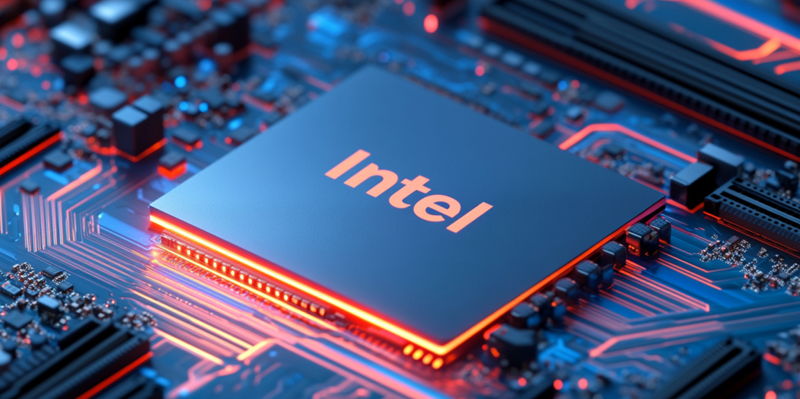The tech world is buzzing with anticipation as Intel’s upcoming Arrow Lake architecture draws closer to its release date, standing at the precipice of fierce competition. Despite leaked slides suggesting only modest performance gains over its predecessor, Raptor Lake, Arrow Lake brings something else to the table that might redefine expectations. Power efficiency, a crucial metric for today’s technology, takes center stage in this release, albeit with less dramatic improvements in outright performance. For example, in gaming tests, Raptor Lake narrowly outpaces Arrow Lake, registering 264 frames per second compared to 261, but at the cost of consuming an additional 80 watts of power.
Performance Metrics and Comparison
Marginal Gaming and Compute Gains
In a landscape where every percentage point matters, Arrow Lake’s performance metrics showcase a marginal edge over AMD’s upcoming Zen 5 architecture. Intel’s Arrow Lake demonstrates a slight superiority, ranging from 5% to 11% in compute-based benchmarks. Furthermore, when pitting it against the older Zen 4 7950X3D CPU, the results display a nuanced outcome. Arrow Lake holds its ground in gaming performance but truly shines in rendering tasks, boasting a 5% to 30% advantage. It is essential to consider that Zen 4 is two years old, a significant factor adding context to these results. Arrow Lake’s performance-per-clock (IPC) gains also come into play, with an uplift of 9% for its P-cores and a notable 32% for its E-cores.
AMD has claimed a 13% IPC increase for Zen 5 over Zen 4, making Intel’s gains appear relatively modest. This leads to Arrow Lake and Zen 5 being more or less on par, albeit achieving the results through different architectural approaches. While Zen 5 received a lukewarm reception, Arrow Lake may still find its niche owing to its power efficiency improvements. However, the mix of slight performance enhancements and significant power savings positions Arrow Lake as a strategic move by Intel to serve a more sustainability-conscious market.
Architectural Adjustments for Efficiency
Intel has undertaken several architectural changes for Arrow Lake that underscore its focus on efficiency over sheer performance. One notable adjustment is the removal of Hyper-Threading in its flagship Core Ultra 285K CPU. By disabling this feature, Intel aims to optimize performance without dramatically increasing power consumption. Additionally, Arrow Lake lowers its boost clock speeds from the impressive 6GHz seen in Raptor Lake to a more tempered 5.5GHz. These alterations are intended to create CPUs that offer robust performance while operating at more manageable power levels and thermal outputs.
The emphasis on efficiency translates into more sustainable and cooler-operating CPUs, which could become a significant attraction for users prioritizing reliability and energy efficiency over maximum performance benchmarks. This shift could also result in better long-term system stability and potentially lower cooling requirements, making Arrow Lake an appealing choice for a specific market segment. The broader narrative here is that Intel is seeking to balance performance gains with responsible energy use, a direction that may herald a new era of eco-friendlier computing solutions.
Market Expectations and Launch Speculations
Community Reception and Market Positioning
Despite the focus on efficiency, there is a palpable concern within the community that Arrow Lake might underwhelm if it only matches Zen 5 in overall performance. Members of the tech community are often driven by a thirst for groundbreaking improvements, and a balanced approach might not completely satiate these demands. Yet, it’s vital to recognize that Intel’s journey toward enhanced efficiency offers a different value proposition, especially when compared to AMD’s offerings. Arrow Lake could appeal significantly to those who seek dependable performance without the burden of excessive power consumption and cooling challenges.
Another layer to this intricate narrative is the historical context of Intel and AMD’s market offerings. AMD’s Zen 5, by all accounts, has not set the industry alight, and if Arrow Lake mirrors or slightly improves upon Zen 5’s benchmarks with a better power profile, it could change user perceptions about what matters in modern CPUs. These modest but meaningful steps in CPU development may very well shape the future trajectory of both companies by emphasizing a sustainable performance strategy over a purely aggressive one.
Launch Details and Industry Impact
The tech community is abuzz with excitement as Intel’s upcoming Arrow Lake architecture gets closer to its launch, promising to shake up the landscape of computing. While leaked documents indicate only slight performance improvements over its predecessor, Raptor Lake, there’s more to Arrow Lake than meets the eye. This new architecture focuses heavily on power efficiency, an increasingly vital factor in today’s technology-driven world. Although it may not boast massive gains in raw performance, the efficiency advancements could set new benchmarks. For instance, in gaming benchmarks, Raptor Lake marginally outperforms Arrow Lake, achieving 264 frames per second compared to Arrow Lake’s 261. However, this comes at a significant power cost, with Raptor Lake consuming an additional 80 watts. This trade-off between performance and power consumption could make Arrow Lake a more attractive option for users focused on efficiency and sustainability. As such, while the outright speed increases are modest, the improvements in energy consumption are poised to redefine user expectations in the ever-evolving tech landscape.

